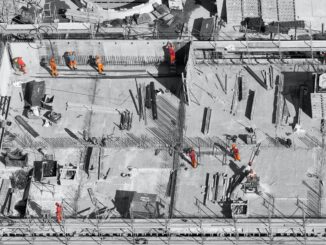The need for legislation in relation to health and safety has become evident over the years in many countries, and state regulators have introduced widespread measures to help protect workers and keep them safe in most types of businesses and industrial environments.
Agriculture and farms are not exempt from the principles behind these measures, but are often excluded or minimised simply because the nature of the work makes it difficult to implement or monitor a number of specific rules in a way that other businesses are able to.
A lot of legislation tends to focus on the younger members of the workforce, often children and young teenagers, partly because they are most at risk and partly because the nature of farm employees means that family members are often involved and need some degree of official protection to overcome any problems about family boundaries.
OSHA
The Occupational Safety and Health Act, known as OSHA, is a good example of the type of legislation referred to above. It contains a number of highly significant regulations and rules designed to protect workers.
It also has some limitations and restrictions in relation to agriculture and farms, and makes a number of distinctions concerning the number of employees that a farm has, and the implications in terms of its size, and health and safety capabilities.
Workers Compensation Laws
Most businesses will have to pay into some type of workers compensation insurance fund which will exist to pay medical, or rehabilitation costs for injuries and accidents caused at work.
Agricultural businesses and farms are normally included in this type of legislation, and any farm management needs to be aware of their obligations, both in terms of their financial commitments and any health and safety regulations that such legislation put in place.
EPA’s Worker Standard Protection.
Although different countries will have different levels of legislation, the worker protection standard known as the WPS, is a really important regulation to look at, as it focuses on reducing the risk of pesticide poisonings on farms and agricultural businesses.
The use of pesticides and other chemical materials is obviously crucial to the nature of the work of a farm and putting in place preventative measures to reduce pesticide poisoning is crucial.
Any act or regulation should cover requirements for pesticide safety training, use of PPE, decontamination procedures, supplies, and perhaps most importantly ways to make sure that emergency medical assistance is available.
In the event of pesticide poisoning, timing for emergency response is crucial and on farms and agricultural businesses this can often be a real problem.
It is important that any farm or business that uses pesticides has some type of in-house emergency medical preparation for how to deal with such emergencies, as being able to rely on emergency medical responses may not be an option.
Insurance Companies
Love them or hate them, they do have an important place in ensuring health and safety practices in farming.
All farms will need some type of insurance in relation to property and casualty, employer liability, possibly public liability as well, vehicle insurance etc.
Insurance companies are also well versed in the nature of risk as this is their business, and they will be quick to identify where the main areas of risk and possible accidents are in any particular business.
A farm or agricultural business would be well advised to take note of the insurance companies views, and will need to comply with any terms and conditions that the insurance company may apply to the business, with regard to their insurance policies.
Quite often these regulations follow a similar principle to state regulation in that they focus on the nature of youth employment and the potential dangers that follow from this.
They may well put in place certain restrictions on age limits for children, or young teenagers, to be involved in certain types of the business, often most notably including these of machinery or driving or using certain types of equipment.
Vehicles
Farms use a wide variety of different types of vehicles ranging from tractors to ATV’s to vans to heavy construction machinery, all as a normal day-to-day part of their business.
There are a number of common safety features and potential risks that come with the use of all of these vehicles, but perhaps the most important one to flag up is that these vehicles are used on both private land and on public highways as well.
This can create a different mindset in that people can be more lax on their own land, and sometimes carry this attitude into their use of vehicles on public highways.
It is important therefore from a health and safety perspective that when any of the farms vehicles are used on a public highway they comply with all local and national regulations.
These normally relate to the load restrictions for width, length, wait, height of the vehicle, safety chains, and lighting and marking regulations which apply to the vehicles.
These regulations are likely to be a legal requirement as well as carrying significant implications for the safety of the vehicle itself and other road users and pedestrians who may come into contact with it.


